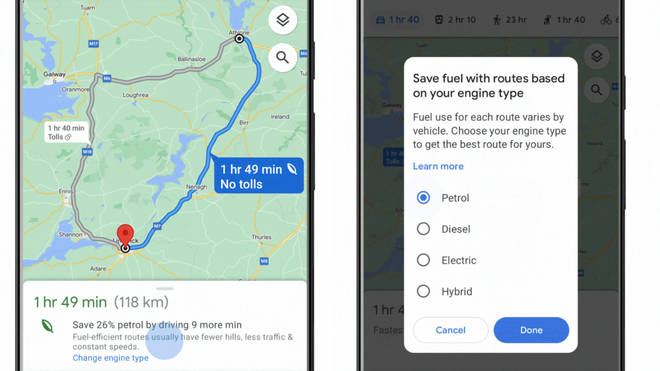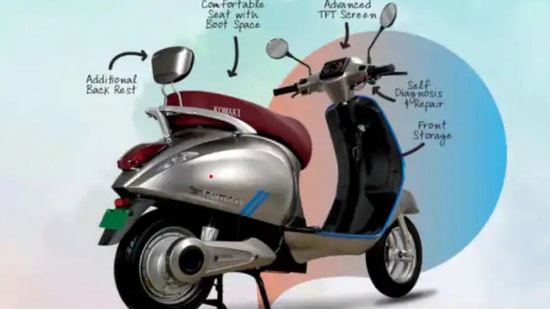In an era where environmental sustainability has become paramount, the convergence of technology and eco-consciousness is leading the charge towards greener living spaces. The year 2024 has seen RHVAC and E&E at the forefront of this movement, unveiling groundbreaking innovations designed to transform homes into bastions of efficiency and ecological stewardship. This article explores the latest advancements presented by these pioneering companies and examines their potential impact on the future of residential living.
Revolutionizing Home Efficiency
RHVAC and E&E have introduced a suite of cutting-edge technologies aimed at revolutionizing home efficiency. These innovations are not merely incremental improvements but represent significant leaps forward in how we approach energy consumption, environmental impact, and overall comfort in our homes.
Advanced Climate Control Systems
One of the standout features of the RHVAC and E&E 2024 lineup is their advanced climate control systems. These systems integrate state-of-the-art sensors and smart algorithms to optimize heating, ventilation, and air conditioning (HVAC) operations. By analyzing real-time data, these systems can adjust temperature settings with unprecedented precision, reducing energy consumption while maintaining optimal comfort levels.
Smart Thermostats and Zoning
A key component of these climate control systems is the introduction of smart thermostats that leverage machine learning to understand user preferences and occupancy patterns. These devices not only allow for remote control via mobile apps but also enable zoning capabilities, ensuring that energy is used efficiently by heating or cooling only the areas in use. This technology marks a substantial advancement in home climate management, offering both convenience and substantial energy savings.
Energy-Efficient Building Materials
In addition to advanced HVAC systems, RHVAC and E&E are pioneering the use of energy-efficient building materials. These materials are designed to enhance the thermal performance of homes, reducing the reliance on heating and cooling systems and, consequently, lowering energy bills.
High-Performance Insulation
One notable innovation is the development of high-performance insulation materials that offer superior thermal resistance. These materials are engineered to minimize heat transfer, keeping homes warmer in winter and cooler in summer. The result is a significant reduction in the energy required to maintain comfortable indoor temperatures, contributing to both cost savings and environmental sustainability.
Eco-Friendly Construction Materials
Another important advancement is the use of eco-friendly construction materials that reduce the environmental footprint of home building. These materials are sourced from sustainable resources and are designed to be recyclable or biodegradable, further enhancing the ecological benefits of new home constructions.
Sustainable Energy Solutions
As part of their commitment to sustainability, RHVAC and E&E are also focusing on integrating renewable energy solutions into residential settings. These innovations aim to reduce reliance on fossil fuels and promote the use of clean, renewable energy sources.
Solar Energy Integration
One of the key innovations in sustainable energy solutions is the integration of solar power systems. RHVAC and E&E have developed advanced solar panel technologies that are more efficient and aesthetically pleasing than traditional panels. These systems can be seamlessly integrated into the design of residential buildings, providing a reliable and clean source of energy for various home applications.
Solar-Powered HVAC Systems
A particularly exciting development is the solar-powered HVAC systems that RHVAC and E&E have introduced. These systems use solar energy to power heating and cooling operations, significantly reducing the reliance on grid electricity. By harnessing the power of the sun, these systems offer a sustainable solution that aligns with the broader goals of energy conservation and environmental protection.
Home Battery Storage Solutions
In addition to solar energy integration, RHVAC and E&E are advancing home battery storage solutions. These batteries store excess solar energy generated during the day, which can then be used during periods of high demand or when sunlight is not available. This technology enhances the reliability of solar power systems and provides homeowners with greater control over their energy usage.
Enhanced Battery Technologies
The latest battery technologies introduced by RHVAC and E&E feature improved energy density and longer lifespans. These advancements ensure that home battery systems are both practical and economically viable, further encouraging the adoption of renewable energy solutions.
Innovations in Water Conservation
Water conservation is another critical aspect of RHVAC and E&E’s eco-friendly initiatives. The company has introduced several innovations aimed at reducing water consumption and promoting more efficient use of this precious resource.
Smart Irrigation Systems
One of the notable innovations in water conservation is the development of smart irrigation systems. These systems use weather data and soil moisture sensors to optimize watering schedules and amounts, ensuring that plants receive the right amount of water without wastage. This technology not only conserves water but also promotes healthier landscapes and reduces the need for manual intervention.
Water-Efficient Fixtures
RHVAC and E&E have also focused on improving water efficiency within the home. This includes the introduction of water-efficient fixtures such as low-flow faucets, showerheads, and toilets. These fixtures are designed to minimize water usage while maintaining performance, contributing to significant reductions in overall household water consumption.
Greywater Recycling Systems
Another important innovation is the implementation of greywater recycling systems. These systems collect and reuse water from non-potable sources, such as sinks and showers, for purposes such as irrigation and toilet flushing. By recycling greywater, homeowners can reduce their reliance on freshwater sources and lower their environmental impact.
Smart Home Integration
RHVAC and E&E are also leading the way in integrating eco-friendly technologies with smart home systems. This integration allows homeowners to manage and optimize their energy usage more effectively, contributing to overall sustainability goals.
Home Automation and Control
The integration of eco-friendly technologies with home automation systems enables homeowners to control various aspects of their home environment with greater precision. Smart home systems can manage lighting, climate control, and energy usage based on real-time data and user preferences, ensuring that resources are used efficiently.
Energy Management Systems
A key component of smart home integration is the development of energy management systems that provide insights into energy consumption patterns. These systems can identify areas where energy savings can be achieved and offer recommendations for optimizing energy use. By leveraging data and automation, homeowners can make informed decisions that contribute to both cost savings and environmental benefits.
Enhanced User Experience
The user experience of smart home systems has also been improved with the introduction of intuitive interfaces and voice control capabilities. These advancements make it easier for homeowners to interact with their home automation systems and manage their eco-friendly technologies effectively.
Future Prospects
Looking ahead, the innovations presented by RHVAC and E&E in 2024 represent just the beginning of a broader movement towards sustainable and efficient living. As technology continues to advance, we can expect further developments that enhance the eco-friendliness of residential environments and contribute to a more sustainable future.
Ongoing Research and Development
RHVAC and E&E are committed to ongoing research and development to drive further advancements in eco-friendly home technologies. This includes exploring new materials, technologies, and approaches to improve energy efficiency, water conservation, and overall sustainability.
Collaborative Efforts
Collaborative efforts between technology providers, policymakers, and industry stakeholders will also shape the future of eco-friendly home innovations. By working together, these groups can drive the adoption of sustainable practices and technologies, ensuring that the benefits of eco-friendly innovations are realized on a broader scale.
Adoption and Implementation
As eco-friendly technologies become more accessible and affordable, their adoption will likely increase. Homeowners and builders are expected to embrace these innovations, contributing to the creation of greener and more sustainable residential environments.
In conclusion, the eco-friendly home innovations presented by RHVAC and E&E in 2024 mark a significant step forward in the quest for sustainable living. From advanced climate control systems and renewable energy solutions to water conservation technologies and smart home integration, these advancements offer a comprehensive approach to enhancing the efficiency and sustainability of residential spaces. As we move forward, the continued development and adoption of these technologies will play a crucial role in shaping a more environmentally conscious future, demonstrating that innovation and sustainability can go hand in hand to create a better world for generations to come.



